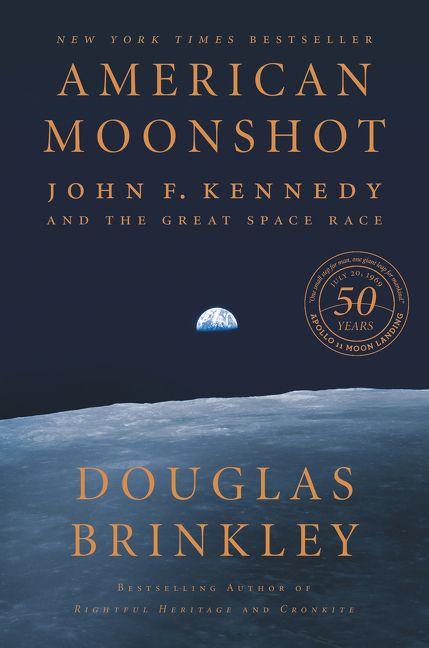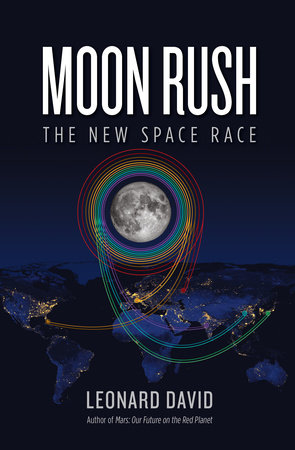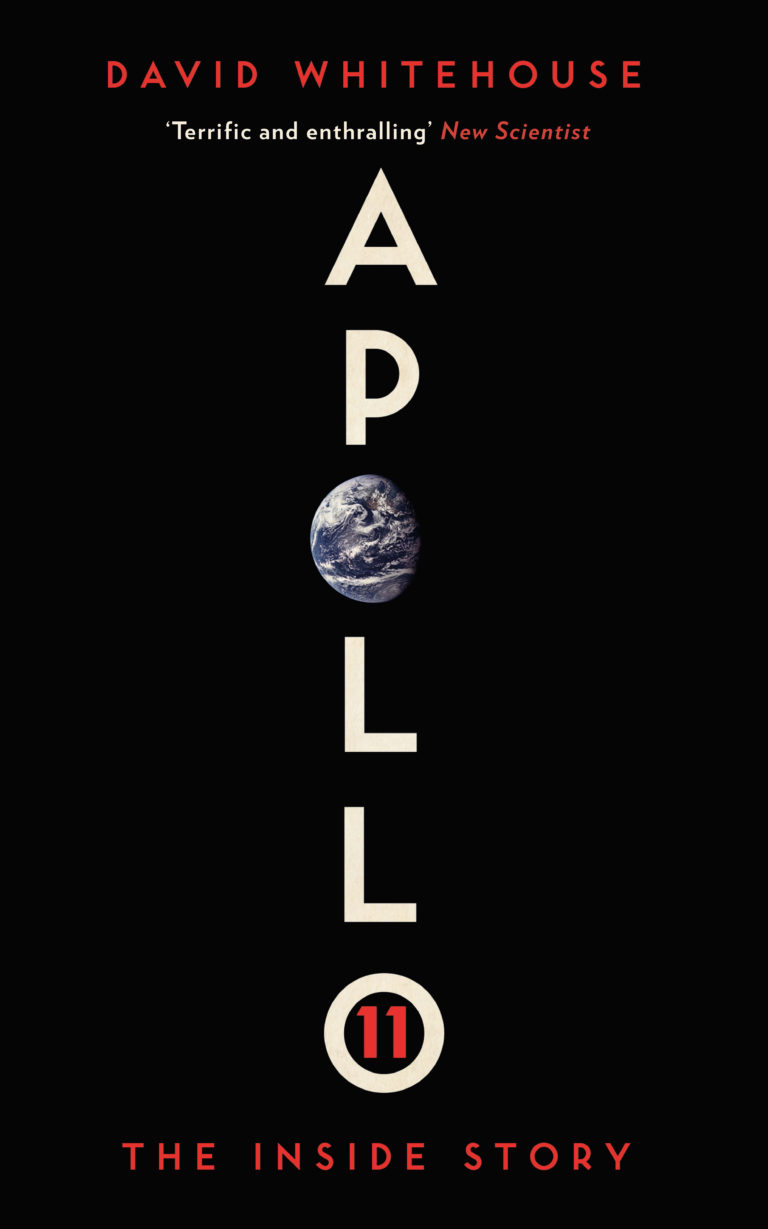Annotated Bibliography: Apollo 11 50th Anniversary
As 2019 is the 50th anniversary of Apollo 11, many new histories and texts are lining the physical and virtual shelves of libraries and bookstores all over the world. Standing in front of these very similar looking books, and not knowing some of their authors, I didn’t know what was different about each one. Therefore, I read all of them, and created this annotated bibliography to help other spaceflight readers, new or old, make their purchases accordingly.
Public histories are distinctly less-rigorous in sourcing and broader in scope than academic histories–a quality required not to ward off the casual reader and allow non-field specific audiences to grasp narratives and concepts. In a combination of editorial directions, publishing constraints, and perhaps author preference, these books go with the format of broad endnotes (if at all); and, in some cases, curiously short bibliographies. The exceptions to these omissions are evident. As a historian in the making, I often wonder why there is an appeared aversion to displaying proof in public histories by the use of tools such as footnotes, especially in this information age of fact v. fiction.
Maybe I’m just a stickler. Some would say having a bibliography for each Living Space article is overkill! Anyway...
In addition to the public histories presented below, I also recommend a subscription to spaceflight history’s academic journal, Quest, as well as the National Space Society’s magazine, Ad Astra. Both are invaluable sources for academic and popular articles from professionals in the field.
Seeing as 2019 is still underway and books are still being released, such as Katherine Johnson’s recent book I have yet to get my hands on, perhaps later in the year a follow-up annotated biblio will be conducted as an addendum to this article.
(Courtesy of HarperCollins)
Brinkley, Douglas. American Moonshot: John F. Kennedy and the Great Space Race. New York: HarperCollins, 2019.
Douglas Brinkley, a well-known and respected writer of mid-20th century histories, brings his expertise to spaceflight with an examination of the roles played by John F. Kennedy, US politics, and nationalism in the space race. A notable aspect of American Moonshot is a thick history inspired background on the life of JFK, and some contemporaries such as Wernher von Braun. The formative experiences leading to the personalities that made critical decisions are a subject of agency in Brinkley. Kennedy becomes president and Alan Shepard is shot into space halfway through the book’s 460 pages. Gemini leaves the launchpad 3/4 of the way through. Apollo is the book’s epilogue. This is a history of motivations, rationales, and ideologies more so than a narrative retelling of NASA’s early history; and it includes a myriad fascinating primary sources in-text to substantiate itself. In some ways, the field has been asking for this book, with numerous articles in the most recent edition of Quest dealing with Kennedy, as well as other recent musings from spaceflight historians.
(Courtesy of LID Publishing)
Chudwin, David. I Was a Teenage Space Reporter: From Apollo 11 to Our Future in Space. London: LID Publishing, 2019.
Despite having written a full review of Chudwin, I include his work in this annotated bibliography for his significant contribution to the Apollo 11 discourse–a memoir of covering the event as a college reporter acting as both a primary and secondary source. Chudwin’s personal connection to spaceflight is interlaced with a brief and factually correct storytelling of spaceflight in the 1950s-1970s, whereby Chudwin writes something of a cultural history of the space age. He also introduces the role of spaceflight fandom and collecting to published spaceflight treatises.
(Courtesy of Penguin Random House)
David, Leonard. Moon Rush: The New Space Race. Washington: National Geographic, 2019.
David’s survey of current players and the recent history of lunar exploration is the book that all spaceflight aficionados should recommend to those seeking to learn why crewed-exploration of the Moon is still important, and is a vital step for going to Mars. His argument centers around unfinished scientific exploration and data-gathering started by the Apollo program, as well as robotic and uncrewed exploration, and includes a satisfactory and satiating explanation of the precise information Apollo and other lunar exploration has brought to scientists. In response to these questions on that idea from other press or public affairs, the answers are broad and imprecise. Not Moon Rush. Other topics included are along the lines of international cooperation, private industry, current plans for a Lunar Gateway, and more. David also conducts an analysis of the roles privatization and industrialization may have in lunar exploration–a vital debate with far-reaching pros and cons on either side. The book concludes on a gentle air of caution on the proliferation of unsustainable and irresponsible usage of the Moon’s resources.
(Courtesy of Little, Brown and Company)
Donovan, James. Shoot for the Moon: The Space Race and the Extraordinary Voyage of Apollo 11. New York: Little, Brown and Company, 2019.
Shoot for the Moon is a more focused survey of the direct instruments involved in the flight of Apollo 11 that reaches back in time to the developing space age. Interestingly, Donovan begins with Steve Bales, the flight controller involved in calling the “GO” on Apollo 11’s 1202 alarm, and continues to touch upon the lesser-known figures throughout the book. Though generally a great-man history, it is more comprehensive in its storytelling, avoiding certain triumphalist attitudes while also capturing the incredulity of the accomplishments. The perspective presented on Wernher von Braun is an adequate example of Donovan’s ability to write in this manner. Donovan writes a public history, however, and certain topics are dealt with in that sort of brevity in explanation and terminology–civil rights being one of them. In addition, the book ends with Apollo 11, not delving deeply into future missions or Apollo’s legacy. Where it lacks in these departments, however, Shoot for the Moon makes up for it with readability, and plenty of new tidbits of information laced through the text that spaceflight aficionados will appreciate.
(Courtesy of Grand Central Publishing)
Hero, Basil. The Mission of a Lifetime: Lessons from the Men Who Went to the Moon. New York: Grand Central Publishing, 2019.
Coming from the field of journalism, Hero seeks to identify the traits of the archetypical Apollo astronaut with a structure loosely similar to a character study or personal growth treatise. This is no new undertaking; and yet, Hero brings into the mix substantial personal interviews and previously unexplored sources. The result is a useful and accurate depiction of what makes these particular people different–even from other astronauts. Hero doesn’t pull punches with the aspects of this personality type that may be damaging in its relationships with others, rather, it grabs these challenges head-on and makes them appropriately integral to the character and the story. I learned a lot from this book, and what I already knew about Apollo astronauts has been thoughtfully organized to make sense thanks to The Mission of a Lifetime.
(Courtesy of Penguin Random House)
Launius, Roger D. Apollo's Legacy: Perspectives on the Moon Landings. Washington: Smithsonian Books, 2019.
It doesn’t get much better than a compilation of essays from NASA’s former chief historian, the excellently knowledgeable and well-published Roger Launius. Speaking as an academic at heart, Apollo’s Legacy was the most engaging and exciting to analyze and absorb in researching this annotated bibliography. It is not overly specialized, however, being polished for a general audience with a light background in spaceflight history to enjoy as well. Launius seeks to do in Apollo’s Legacy what spaceflight history direly needs to survive as a dynamic and up-to-date branch of academia: introducing and integrating postmodernism, with a reanalysis of primary sources and proper perspective-izing of Apollo’s actual influence and actual legacy as it is written about–not just the triumphalist interpretation or idealistic hopes of what it could mean in a philosophical history, in addition to the modern idea of a technological or explorative achievement. Launius “goes there,” if you will, and he does so with nothing short of the best topics and terminology. My copy is graffiti-cally annotated and dog-eared.
(Courtesy of Penguin Random House)
Stone, Robert, and Alan Andres. Chasing the Moon: The People, the Politics, and the Promise That Launched America into the Space Age. New York: Ballantine Books, 2019.
This text by Stone and Andres is a companion piece to the successful PBS documentary of the same name aired during the Apollo 11 50th anniversary week. In this form, Chasing the Moon is a great-man history of the space age, starting in the early days with rocket pioneers, going through Wernher von Braun, Eisenhower, Kennedy, and the rest. Despite the attention to politics, Stone and Andres are also careful to include sociocultural elements that were part of the space age’s engines, best exemplified by the new lens on Arthur C. Clarke, interweaving his biography with the development of rocketry and spaceflight. As is true with most surveys of spaceflight history, the same stories are examined through the same sources, albeit with some newer connections to the present and a handful of different perspectives on certain rationales.
(Courtesy of Icon Books)
Whitehouse, David. Apollo 11: The Inside Story. London: Icon Books, 2019.
Whitehouse writes an adequate telling of Apollo 11, though not quite as “inside” as the title may insinuate. His prose is informal and journalistic, as if telling the story of Apollo 11 around a coffee table or campfire, and sticks to the already established narrative of events and agencies. In this capacity, it makes a fantastic introduction to the story of NASA and Apollo 11 to a brand new reader in the topic, sensibly so, as the book was published in the UK and seems to be geared towards such an audience.
The following books were not originally published in 2019, and are included particularly for the newcomer to reading spaceflight history. With the exception of Hansen, they are primary source memoirs and not histories of Apollo.
(Courtesy of Penguin Random House)
Aldrin, Buzz, and Ken Abraham. Magnificent Desolation: The Long Journey Home from the Moon. New York: Harmony Books, 2009.
Buzz Aldrin, with Ken Abraham, writes a candid and moving memoir about life after being a NASA astronaut, including the tumultuous personal struggles Aldrin faced in the following decades. His poetically apt and evocatively profound first description of the Moon, “magnificent desolation,” would, as he explains in the book, come to define his post-flight experience as well. The memoir includes a brief personal account of critical moments in the mission. It is, in some ways, an answer to his first well-known exploration of these struggles, Return to Earth, originally published in 1973. This text is a key account of the enigmatic personality that is Buzz Aldrin, and all who consider this story will come to understand the complex and brilliant public figure.
(Courtesy of Macmillan Publishers)
Collins, Michael. Carrying the Fire: An Astronaut's Journeys. New York: Cooper Square Press, 1974.
Carrying the Fire is often said to be the best astronaut memoir ever written, and for good reason. Michael Collins is a naturally gifted writer and thinker. His keen insights make this memoir a candid, well-explained account of being an Apollo astronaut; and his endearing wit makes it difficult to put down. Not many punches are pulled, and yet, Collins does not descend into criticism or scandal. Carrying the Fire provides a well-balanced story of what happened and how Collins remembers what happened. Most impressively, Collins did not employ a ghost writer for this project. Reading Carrying the Fire is close to what it’s actually like to speak with Michael Collins.
(Courtesy of Astronaut Central)
Hansen, James R. First Man: The Life of Neil A. Armstrong. New York: Simon & Schuster, 2005.
Hansen is spaceflight history brass, with an exceptional publication history containing thorough and authoritative research. His biography of Neil Armstrong endorsed by the first man himself, and created in tandem with his support, is the longest, most comprehensive, and most complete source of information on this private historical figure that will likely ever be available to researchers and the public alike. It spares no technical detail or precise clarification, and the bibliography alone is scores of pages. Hansen conducted interviews with quite literally every significant figure in Armstrong’s life who were alive at the time of his research phase. A particularly helpful aspect of this history is that along the way, it spends time debunking common myths about Armstrong, whose introversion led the public and media to creating myths based on inaccurate hearsay. Note: an abbreviated addition was published alongside this book’s film adaptation in 2018. This annotation is for the full edition originally published in 2005.
(Courtesy of abebooks)
Mailer, Norman. Of a Fire on the Moon. Boston, MA: Little, Brown and Company, 1970.
Norman Mailer’s Life funded foray into journalism, covering Apollo 11 from the Manned Spacecraft Center in Houston (now JSC) and NASA Kennedy in Florida, has delivered quite an impact on my personal perspective on Apollo 11’s moment in history. As I carefully and closely read each expertly crafted sentence, its profundity not only as a primary source, but also as a piece of creative non-fiction writing, continued to astound me–sometimes positively and sometimes despairingly. It’s not a casual read. Irrelevant to one’s views on Mailer or the counterculture of the 1960s, his unique nuggets of description aptly place the extraordinary somewhere just as surreally relatable, e.g. the description of the Vehicle Assembly Building as a “cathedral of technology” in the context of an apparent shift in humanity’s faith from church to science. The book itself is only topically about Apollo 11, and purists in spaceflight reading may not be onboard. Of a Fire on the Moon is mostly a view on humankind through the lens of a skeptic in the setting of the turbulent 1960s. It is the best period piece on Apollo that I’ve read so far, and certain elements of the word-play, especially on journalists, scientists, and rationales for spaceflight, is still concerningly true today.
ad meliora
Cover image - NASA’s Apollo 50 banner (Courtesy of NASA)














